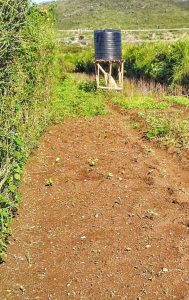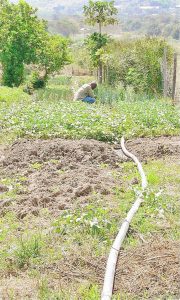These projects have been completed under the direction of Returned Peace Corps Volunteers Dave & Rebecca Rowson. 
To read about the beginning of these projects, CLICK HERE.
Following is the final report for the Shamba (garden) Project – Kakrigu, Rusinga Island, Kenya. A second report for the other aspect of this collection of projects will follow.
Project Summary:
The location of the three water projects we had identified are in the Kakrigu and Kolo districts on Rusinga Island, on Lake Victoria, near Mbita, Kenya. Due to practical constraints, we were forced to modify the project. We substituted the shamba of St. Teresa’s Parish for the planned shamba of Mr. Sampson Onyango, in the Kolo district. We had planned on his plot of land for growing maize. Several factors made the change necessary. There was no fencing for the plot, hippos frequented the area, eating maize as their preferred diet, and finally the long rains made accessibility nearly impossible.
The water tank installation at Nyamuga Special Primary School for the Physically Challenged was successfully implemented in late January. A 5,000-liter tank and PVC gutter system was installed adjacent to the new boarders’ dorm.
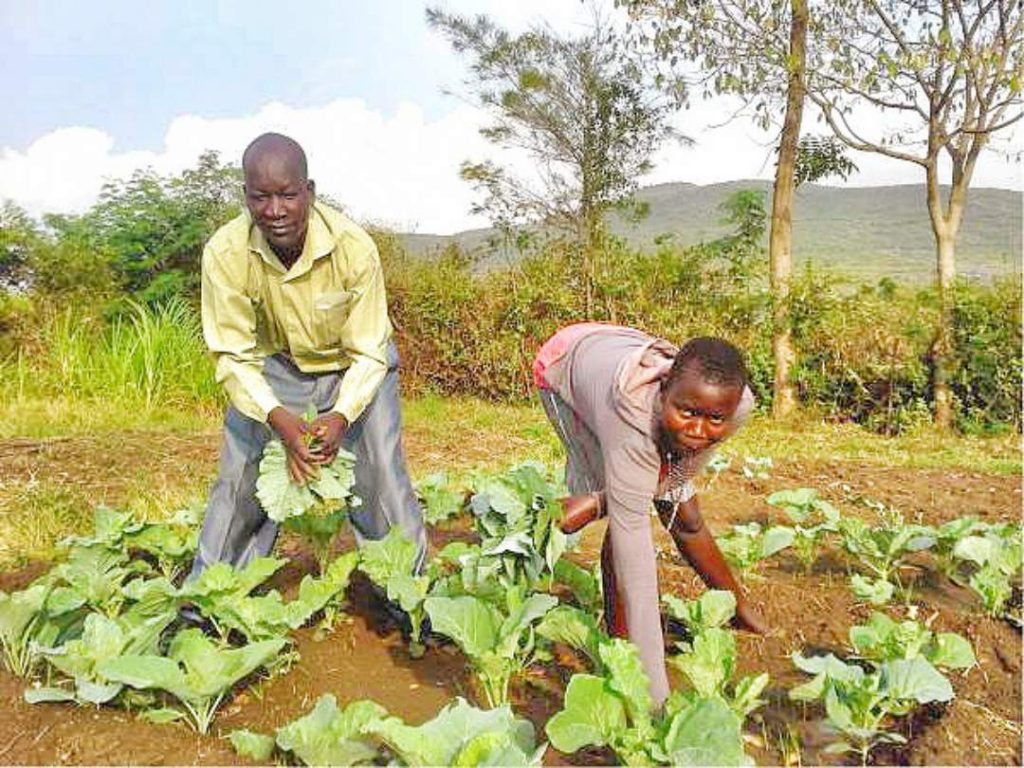 The Needs Met:
The Needs Met:
The basic need for the wellbeing of a large part of the population on Rusinga Island is sustainable agriculture, removing dependence on the two, long and short rain cycles. Many of the land holdings that are situated at the edge of Lake Victoria can be invigorated by pumping lake water into tanks and irrigating or by directly spraying pumped water onto the crops.
(1) The first candidate for assistance was Mr. Morris Owira. Mr. Owira is a farmer who relied on the rains, and sometimes with the assistance of a borrowed pump, to irrigate his crops. We proposed to grant him a 5.5 hp water pump w/intake, distribution hosing, and a 2,500-liter water tank. This was completed in September of 2015. The pump and hosing were delivered in March, 2015. The water tank was delivered and installed with support platform in September, 2015.
(2) The second shamba in the project to receive assistance was the St. Teresa’s Parish shamba that serves the St. Joseph’s Girls Secondary School. It consists of approximately 1.4 acres and contained three old water tanks. One of the tanks was replaced with a 2,300-liter tank. Several hosepipes were also purchased, along with the 5.5 hp water pump and associated intake and distribution hoses.
There was a man employed at the shamba who was stealing produce and selling it for his personal profit. He had let the shamba fall into a mass of weeds and non-productivity.
Both shambas were in the early stages of production when the long rains hit in April. These were much heavier than normal, lasting much longer 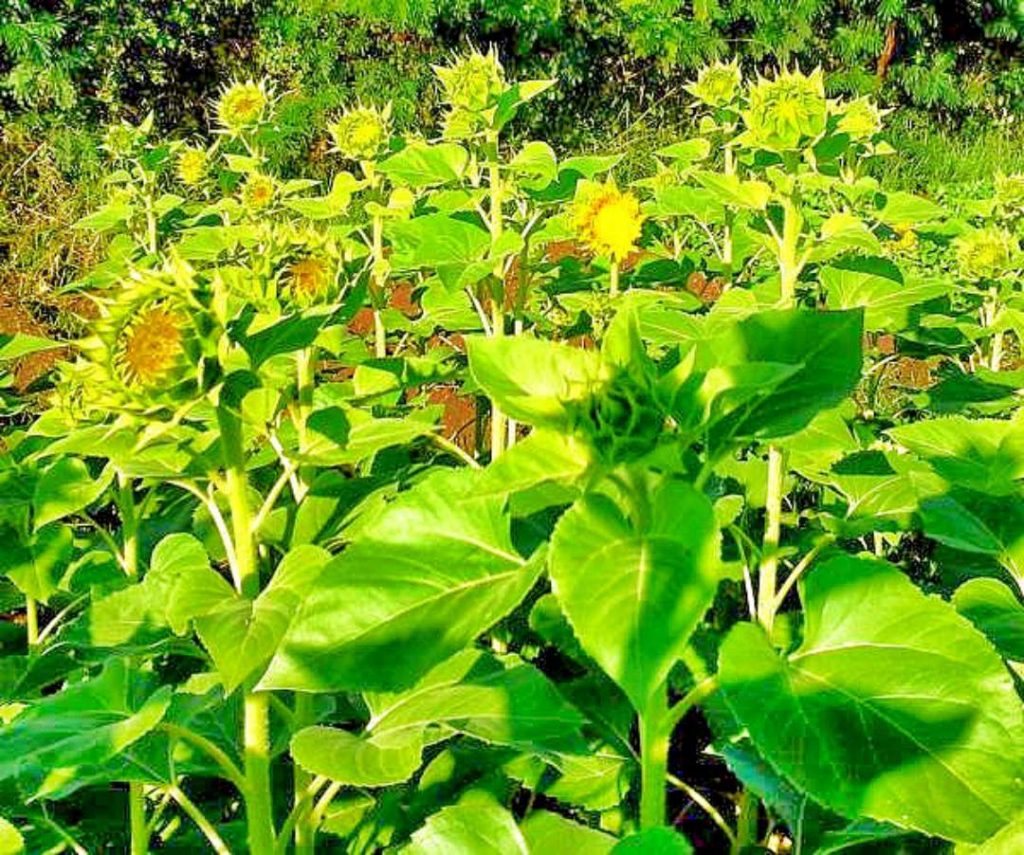 than normal, and both shambas were essentially washed away. There was no crop from either plot. This was a demoralizing event and set us back significantly.
than normal, and both shambas were essentially washed away. There was no crop from either plot. This was a demoralizing event and set us back significantly.
Project Restart:
When the shambas were restarted, we removed the employee from St. Teresa’s shamba and reworked the land. Mr. Owira retilled his plot and gave us a section for the support of the Girls School. It has taken five months of daily work but we are now almost in full production at St. Teresa’s. All of the land has been roto-tilled and all but two sections are in cultivation. We have planted kale, tomatoes, sunflower, cowpeas, cucumbers, maize, squash and watermelons.
The kale and tomatoes were sent directly to St. Joseph’s Girls School. This offsets their need to purchase this food. The remaining crops are for cash that will be sent to the school and fund the labor and seed for sustaining the shamba.
The sunflower is being grown as an experiment to see if the market in Kenya will accept it. If it proves acceptable, we will rent a plot of land and grow a large-scale crop for cash that will be used to support school fees for needy students at St. Joseph’s Girls’ School.
 Mr. Owira has had his trouble with invasions of hippos to the detriment of his/our cowpeas crop. This will be replanted with tomatoes in late November. He has a large crop of tomatoes protected from the hippos at present.
Mr. Owira has had his trouble with invasions of hippos to the detriment of his/our cowpeas crop. This will be replanted with tomatoes in late November. He has a large crop of tomatoes protected from the hippos at present.
St. Teresa’s shamba also has two nurseries currently raising tomato and kale seedlings. These will replace the current crops, as they will be exhausted in December.
Methodology:
The quid-pro-quo for the exclusive lease of part of the shamba was to be made possible through the sharing of water pumps, 2,500-liter water tanks, rototilling services and seed. Once the process was seen to be successful by the surrounding farmers, we were planning to expand within controllable limits and institute a CO-OP with a local market. The CO-OP is still in the long-range plan, but experience has shown that, although it is still possible, a lot of groundwork is yet to be done.
Without realizing that this “Shamba Project” had been attempted before, we came with grand ambition and goals. In 2002, the Parish Priest, Fr. Tielen, and a Dutch management consultant, Kees Ebscamp, originated The RIKE Community Development Program.
This was designed to identify dynamic and sustainable development projects.
One of the projects of this endeavor was the demonstration plot at St. Teresa’s shamba. RIKE fenced the 1.4-acre plot and was to demonstrate good agriculture practices to the local farmers. It subsequently failed as a project due to lack of money and lack of experience and drive of the local farmers.
We have found, in the beginning, a great lack of vision and ambition on the part of the principals involved in the St. Teresa’s shamba. We thought, 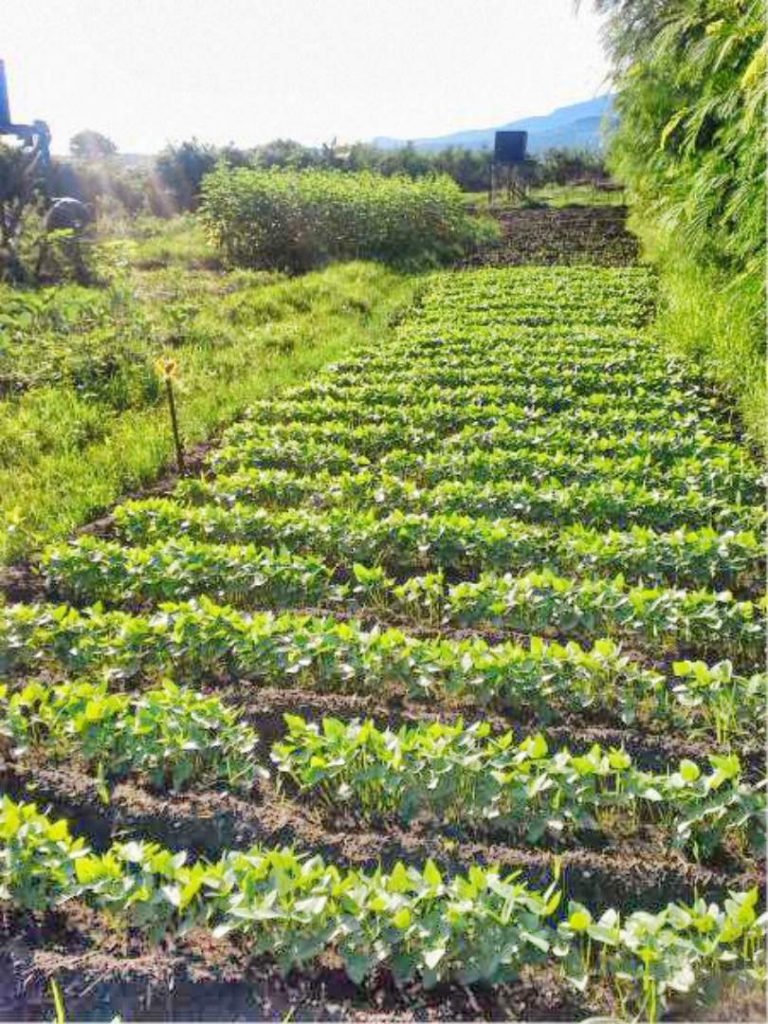 rather naively, that we would put resources up and they would provide the labor and they would prosper. Nothing was further from the actual. It was quite demoralizing at first to see no action on the part of the beneficiaries. Labor was not factored into the original project. Funding was not there to hire people to till and plant and weed.
rather naively, that we would put resources up and they would provide the labor and they would prosper. Nothing was further from the actual. It was quite demoralizing at first to see no action on the part of the beneficiaries. Labor was not factored into the original project. Funding was not there to hire people to till and plant and weed.
Our cleaning woman, who wanted to know if her son could work in the shamba, approached me one day. I hired him and then his brother, as well. Both of these young men are university students and helped turn the project around. It was at this point that we agreed that to be successful we were going to have to hire reliable labor. This has made all the difference and as stated earlier, all the land is tilled and, by December 2015, all will be in cultivation.
Sustainability Planning:
The aim of the continuing project is to be sustaining through sale of produce. This is no easy task as we have discovered. Seed is probably the least costly item. The organic insect deterrent, Neem, is 300 shillings per 100 milliliters and fertilizer is also a real cost. We are growing cowpeas as a cash crop and also as a nitrogen-fixing agent for the soil. We reap a profit from this crop and have expanded it greatly in the shamba.
Sunflower is the next cash crop. The seeds are purchased by an agent and then processed into oil for sale. The dross of the process is also marketed as chicken and large animal feed. We have a trial plot growing and will demonstrate the results to the buyers, in hope of sale to them when we go into large-scale production.
We are building on our successes and are encouraged for the future. We have a minimum of three years to build our project and make it truly sustainable.
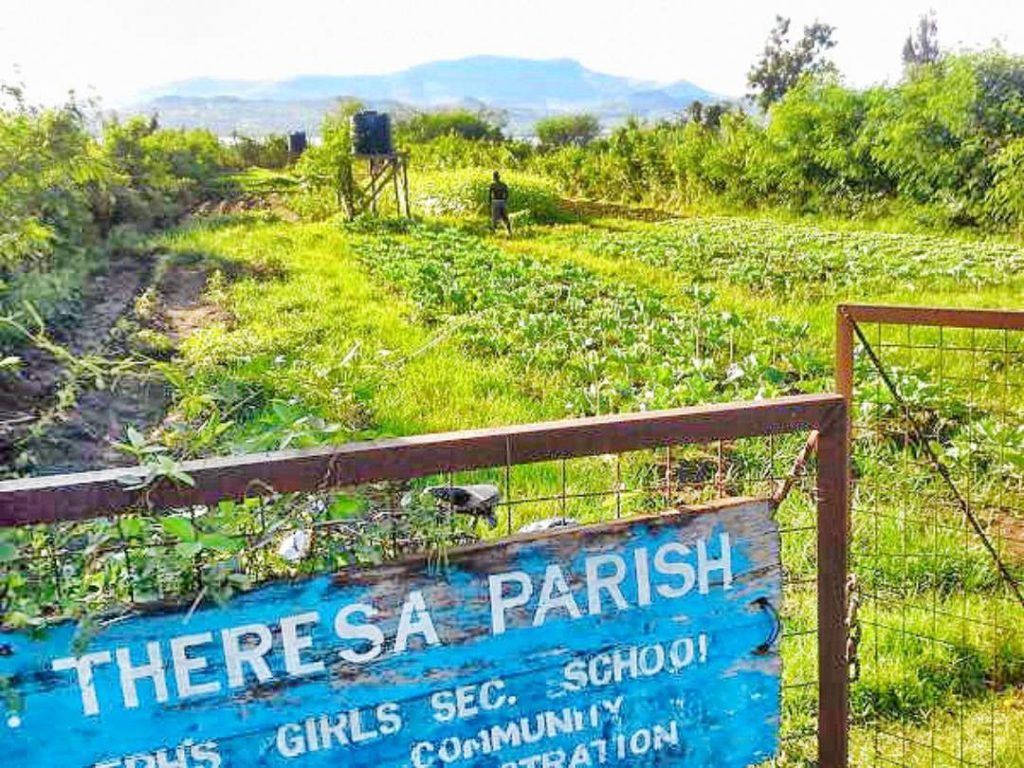 Impact of the Water Charity Funds:
Impact of the Water Charity Funds:
The funds from Water Charity have done more than just buy and install a 5,000-liter water tank and gutter system at the Nyamuga Special School for the disabled. It has provided funding for two additional 2,300-liter water tanks for two shambas in the Kakrigu Parish of Rusinga Island, Kenya. It has allowed us to supply 5.5 hp water pumps and hosing to allow year round agriculture for the parish. Water Charity provided us with the confidence to go out and make this happen. We had to turn our torrential failure into success.
People served by these projects are:
• 85 girls at the St. Joseph’s Girls Secondary School – Food cost savings, vegetables
• Cash crop donations to the school
• Labor and income for two university students and others after semester break
• Water collection and use by 80+ disabled students and 8 faculty and staff of Nyamuga Special School for the Physically Challenged
• Eventual cash donations for school fees (planned cash crop sales)
Indirect Benefits and Lessons Learned:
1. We came to stimulate farmers’ production through equipment donations but this endeavor failed. However, we have seen a trend: All around our shamba are Kenyans plowing and planting crops like we are planting. Villagers have said that they see a Mzungu (white man) with his team in the shamba every day working and they feel that they are shamed if they are not out there as well! This is a small success.
2. It is amazing that such a natural thing as working in the shamba would be commented about on the other side of the island. Wazungu, I guess, just give money and go away.
3. If it is to be it is up to me! This is a teaching point for my workers and future management.
4. One tactic in maximization is to have crops when others do not. However, as we grew maize when no one else on the island had any, there was a down side lesson to be learned. Every bird in the greater Rusinga area found out about it and ate half of the crop. We now will use netting.
Capital Expenses:
In addition to tanks, pumps, distribution hoses, intake hoses, hose pipes and sprinklers, we have invested our own money for the following.
• Honda Roto-tiller – $1,500
• Crop spraying equipment – $100
• Three wheel motorcycle transport vehicle. $2,500
 Future Project Plans:
Future Project Plans:
(1) Above the shamba, far from the lake, on the hill that houses the St. Joseph’s Girls Secondary School, the parish church, and the convent priest’s home, there is no water. The girls go to Lake Victoria and carry water back to the school. The priests and sisters have to have the water brought by donkey cart at their expense.
The easy solution is a project to repair the current borehole pump. The estimated cost is $1,000.
Approximately 120 people would be served by this project .
(2) A second project that will supply borehole water to all the residents on the hill and surrounding area in Kakrigu is a windmill pump system at an existing borehole, currently in disrepair. The windmill in the Jijito or Iron Man model, will supply a constant flow of water to a large tank and concrete cistern system and will utilize existing iron pipes to gravity flow the water to the flat below. This project will provide water for the whole district, approximately 3,000 to 5,000 individuals. It will cost in the range of $30,000.
We have been granted a three-year missionary work permits through the assistance of the Catholic Diocese of Homa Bay. We do not evangelize, but support the needs of the parish as unpaid volunteers.
This report is for NYAMUGA Special School Rusinga Island, Kenya: Water Catchment Project:
This project was a more traditional water catchment system. It was to incorporate PVC guttering, and a 2,500-liter water tank resting on an existing concrete base. It is situated at the new dormitory building at the Nyamuga Special School for primary children with physical disabilities. There are times when the children do not have access to water at the school due to watch staff or authorities not being present, such as weekend mornings.
On the 11th of March, the final payment was made to our contractor and the new water catchment system was presented to Madame Plista Asembo (Deputy Principal) and Mr. Erik Okatch (Principal) of Nyamuga Special School on Rusinga Island, Kenya.
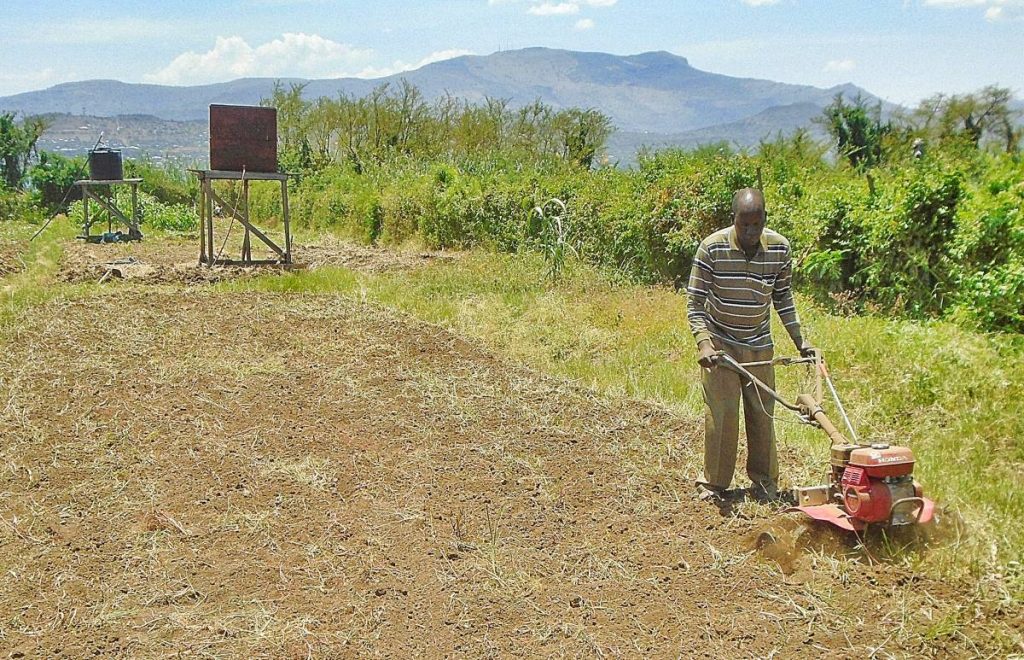 The original site for the tank was on an existing pad located near the side entrance to the new dormitory building. Because of the positioning of the corner of the roof, the design changed to allow the gutters to slope down and take advantage of the lower spot on the facia and capture the additional runoff from that part of the roof. Initial calculations, based on the wall dimensions and the area of the roof, indicated that the tank would be full after the first 2-inch rainstorm of the heavy rains!
The original site for the tank was on an existing pad located near the side entrance to the new dormitory building. Because of the positioning of the corner of the roof, the design changed to allow the gutters to slope down and take advantage of the lower spot on the facia and capture the additional runoff from that part of the roof. Initial calculations, based on the wall dimensions and the area of the roof, indicated that the tank would be full after the first 2-inch rainstorm of the heavy rains!
The new position required that a platform be built to support the new 5,000-liter water tank. Through the assistance of Ken and Norene Watson, longtime supporters of the school, we were able to upgrade the water tank to a 5,000-liter capacity from proposed 2,500-liter tank originally planned.
People Served
Currently, Nyamuga Special School has 128 disabled children, 20 of whom are boarders. The school also has a staff of 10. All of the students and staff will use the water as well as boarders, when no staff are available, which we see as the biggest benefit of the project.
Budget
The budgeted cost for the tank and gutters was initially $500. The final cost with the larger, 5,000-liter tank and concrete base was $612. Ken and Noreen Watson, who are long-term friends and supporters of the school, graciously donated the additional money.
Dave Rowson, PCV states,”I thank you for your support in the past and pray for your assistance to our efforts on behalf of the people on Rusinga Island in the future.”
We would like to thank Dave & Rebecca Rowson once again for executing such a fine project, despite the setbacks.
